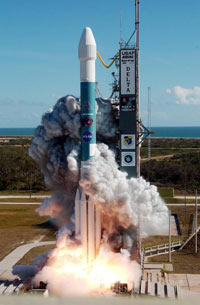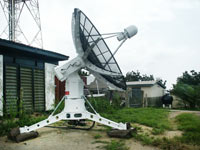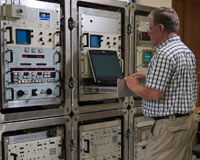|
 Dedicated Mobile Telemetry Tracking Stations
Dedicated Mobile Telemetry Tracking Stations
With its origins linked to South Africa's now defunct space programme Denel Overberg Test Range also has the capability to provide telemetry launch support services from almost any remote location in the world. Since 2003 the Test Range provides telemetry launch support to NASA / United Launch Alliance (ULA) and lately also to the French Space Agency, CNES (Centre National dEtudes Spatiales) / European Space Agency (ESA). The Test Range specializes in offering telemetry launch support in remote locations where real-time telemetry coverage is required of crucial events during a space mission and where no fixed ground station is nearby. For this purpose it has two dedicated mobile S-band telemetry tracking stations available that has been adapted and re-configured to make it transportable by commercial air cargo for quick deployment at remote locations with minimal infrastructure available.
Supplier of Choice
Being the only mobile telemetry tracking stations of its kind available in Southern Africa, the Test Range has become a logical choice to provide assistance to international space programmes. To date the stations have already been deployed in various African countries, an island in the Atlantic Ocean, Australia and New Zealand. Of the missions supported include NASAs Mars Exploration Rover I (Spirit) launched in 2003 and the Deep Impact spacecraft launched in 2005, and more recently support provided to CNES during the launch of the Jules Verne, Johannes Kepler and Edoardo Amaldi Automated Transfer Vehicles (ATVs) in 2008, 2011 and 2012 respectively.
|

|
Mobile Telemetry Stations Specification
|
Antenna
|
|
|
Diameter :
|
3 meter
|
|
Receive frequency range :
|
2220-2390 Mhz
|
|
Gain :
|
33.5 dBi @ 2300 Mhz
|
|
Receive polarity :
|
RHCP, LHCP
|
|
G/T :
|
10.3 dB/K
|
|
Max velocity :
|
20º /sec
|
|
Max acceleration :
|
20º /sec/sec
|
|
Travel Azimuth :
|
+720º
|
|
Travel Elevation :
|
-2º to +92º
|
|
|
|
|
Data Recording Formats:
|
Complies to IRIG 106 Standard
|
|
|
|
|
Station Management:
|
Fully computerised
|
|
|

| |
|